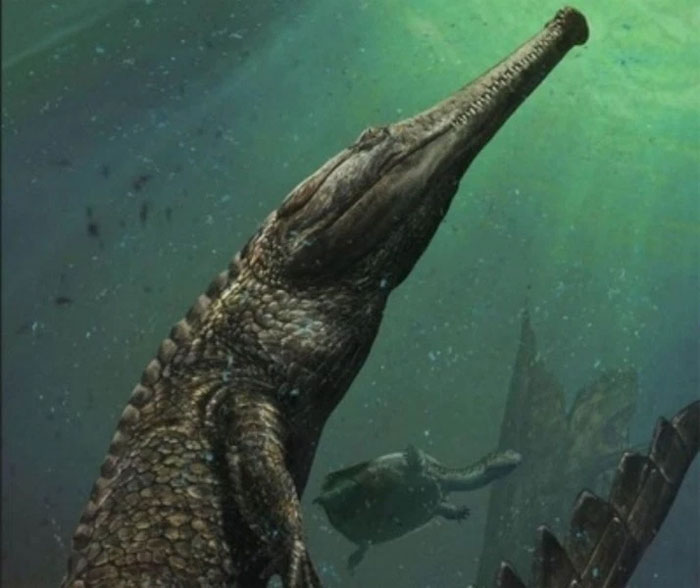Ancient crocodile monsters weigh three tons living under the sea
Paleontologists found the largest sea crocodile fossils ever in a desert in Tunisia, nearly 10 meters long and three tons in weight.
According to National Geographic, the new animal named Machimosaurus rex . The discovery was announced on January 11 in the journal Cretaceous Research. Although the skeleton retains many debris, scientists gathered enough evidence from the 120-million-year-old rock class to identify the reptile as the largest member of the marine crocodile family.
"This is a new discovery from where there are not many fossil discoveries," said Stephen Brusatte, a paleontologist at the University of Edinburgh, UK.
Fossils include skulls and some other pieces of bone, found by researcher Federico Fanti of the University of Bologna, Italy, and colleagues.

Machimosaurus rex is the largest marine crocodile ever.(Photo: Davide Bonadonna).
Scientists are waiting for a more complete skeleton to calculate the exact size of Machimosaurus. However, assuming the new animal is similar in shape to its close relatives, Fanti estimates that Machimosaurus rex is about 9.6 meters long.
Although not as large as some of the distant relatives living in the freshwater area later on, Machimosaurus rex remains the largest member of the crocodile family.Sarcosuchus imperator , the largest freshwater crocodile that lived 110 million years ago, is 12m long and weighs 8 tons.
The predator's teeth can indicate its food source in the ancient ocean. " Machimosaurus rex has relatively short round teeth with a giant skull that can force large bites , " Fanti said. The above characteristics show that a variety of predator crocodiles, including large sea turtles.
"It is most likely an ambush predator, located in shallow water to hunt turtles and fish, while waiting for animals on the land to approach the water , " Brusatte said.
For scientists, the most important point about Machimosaurus rex is not its life size. Paleontologists have long argued whether there was a mass extinction in the late Jurassic period 145 million years ago. This may be the reason for the crocodile-like group of animals called teleosaurid to be exterminated.
The discovery of Machimosaurus rex of the Cretaceous stone revealed if the mass extinction had taken place, it did not kill life all over the planet."The new finding provides further evidence that many marine reptiles have crossed the border and survived the extinction," Brusatte concluded.
One of the great mysteries is why crocodiles in the sea do not thrive as before. Although Machimosaurus rex lasted longer than expected, their numbers were not as large as during the Jurassic period. Machimosaurus rex has an impressive size but it is difficult to survive on land.
- Detecting ancient crocodiles 11 meters long
- Ancient mangoes weigh more than a ton of crocodile meat
- Close up of fossils of crocodiles, elephants, giant prehistoric birds
- Crocodile-head monster alone buffalo caused a stir in Thailand
- Discover giant monsters on the Alps
- Close up of the monster Gustave massacred 300 Nile people
- Amazed the long crocodile with wagons, weighing tens of tons
- All humans weighing how many kg?
- New discovery: Crocodile crawling trees
- Ancient monsters chew on sharks
- Video: A close-up of the giant princess crocodile
- These are 5 prehistoric monsters that deserve to be filmed like Megalodon
 Discovered an ancient centipede fossil 99 million years old
Discovered an ancient centipede fossil 99 million years old Discovered bat-like dinosaurs in China
Discovered bat-like dinosaurs in China Discovered a 200-year-old bronze cannon of the coast
Discovered a 200-year-old bronze cannon of the coast Discover 305 million-year-old spider fossils
Discover 305 million-year-old spider fossils